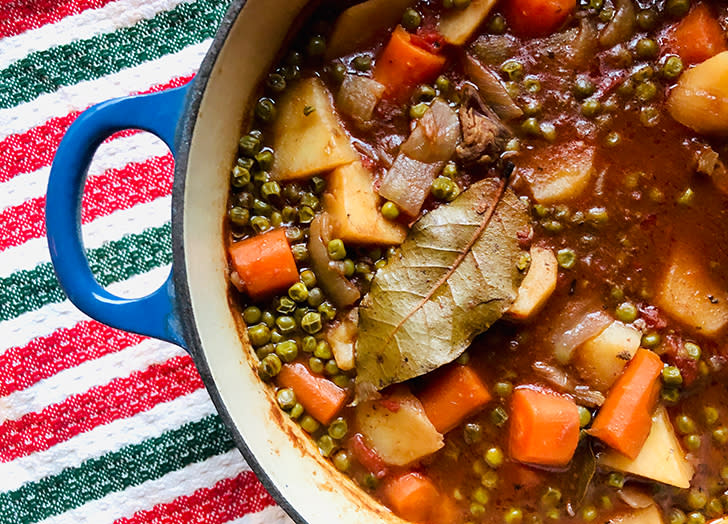Food is a trip that beautifully combines flavor, tradition, and innovation; it’s more than just a means of subsistence. We frequently picture a strong bond with culture, legacy, and the tales that have been passed down through the ages when we think about culinary experiences. However, the way we eat is being redefined by the exciting blend of tradition and contemporary twists that is taking place in today’s changing culinary environment.
Every meal has flavor at its core. A sensory experience is produced by combining the intricacy of ingredients, the strength of herbs, and the richness of spices. However, flavor is more than just taste; it’s also about the feelings, tales, and memories that a meal arouses. Flavor binds us to a deeper connection, whether it’s the surprising kick of a new ingredient or the comforting taste of your grandmother’s stew.

In contrast, tradition has a holy position in the culinary arts. It serves as the basis for many of the cherished recipes of today. More than just formulas, recipes that have been handed down through the years can convey a feeling of place, history, and culture. Tradition is, in a sense, about honoring the origins of a dish, keeping a cuisine’s roots alive, and making sure that future generations may still enjoy it.
But what happens when tradition meets innovation? That’s where the magic happens. Chefs and home cooks alike are experimenting with new techniques, reinterpreting classic dishes, and blending flavors in ways that push the boundaries of what we thought possible. Think of a sushi roll with unexpected ingredients or a traditional pasta dish elevated with molecular gastronomy. Innovation doesn’t seek to replace tradition—it seeks to enhance it. It adds a fresh perspective, a new twist, and sometimes even a dash of surprise.
One great example of this intersection is the rise of farm-to-table dining. This movement emphasizes using locally sourced, seasonal ingredients—honoring the tradition of supporting local agriculture and eating what’s in season—while also embracing innovative cooking techniques that highlight the natural flavors of those ingredients. The result? A celebration of both the past and the future of food, where the flavors are pure, the traditions are respected, and the creativity shines through.

As we continue to explore the rich world of food, it’s clear that the intersection of flavor, tradition, and innovation will only grow more exciting. Whether you’re enjoying a dish steeped in history or a modern reimagining of a classic, each bite is an opportunity to discover something new while respecting the foundations that have made food so magical for centuries.
Food is more than just sustenance—it’s a journey that brings together flavor, tradition, and innovation in a beautiful dance. When we think about culinary experiences, we often envision a deep connection to culture, heritage, and the stories passed down through generations. But in today’s evolving food scene, there’s an exciting fusion happening where tradition meets modern twists, and it’s redefining the way we experience meals.
At the heart of every dish is flavor. The richness of spices, the boldness of herbs, and the complexity of ingredients come together to create a sensory experience. But flavor isn’t just about taste—it’s about the emotions, memories, and stories that a meal evokes. Whether it’s the familiar taste of your grandmother’s stew or the unexpected kick of a new ingredient, flavor connects us to something deeper.
Tradition, on the other hand, holds a sacred place in the culinary world. It’s the foundation on which many of today’s beloved dishes are built. Recipes passed down through generations are more than just formulas—they carry history, culture, and a sense of place. In some ways, tradition is about preserving the roots of a cuisine, respecting the origins of a dish, and ensuring that future generations can continue to experience it.

But what happens when tradition meets innovation? That’s where the magic happens. Chefs and home cooks alike are experimenting with new techniques, reinterpreting classic dishes, and blending flavors in ways that push the boundaries of what we thought possible. Think of a sushi roll with unexpected ingredients or a traditional pasta dish elevated with molecular gastronomy. Innovation doesn’t seek to replace tradition—it seeks to enhance it. It adds a fresh perspective, a new twist, and sometimes even a dash of surprise.
One great example of this intersection is the rise of farm-to-table dining. This movement emphasizes using locally sourced, seasonal ingredients—honoring the tradition of supporting local agriculture and eating what’s in season—while also embracing innovative cooking techniques that highlight the natural flavors of those ingredients. The result? A celebration of both the past and the future of food, where the flavors are pure, the traditions are respected, and the creativity shines through.
As we continue to explore the rich world of food, it’s clear that the intersection of flavor, tradition, and innovation will only grow more exciting. Whether you’re enjoying a dish steeped in history or a modern reimagining of a classic, each bite is an opportunity to discover something new while respecting the foundations that have made food so magical for centuries.

